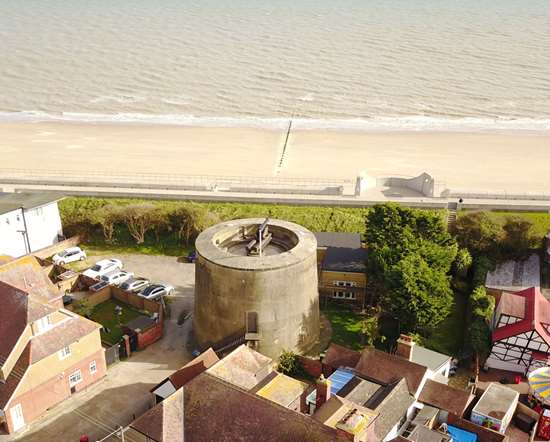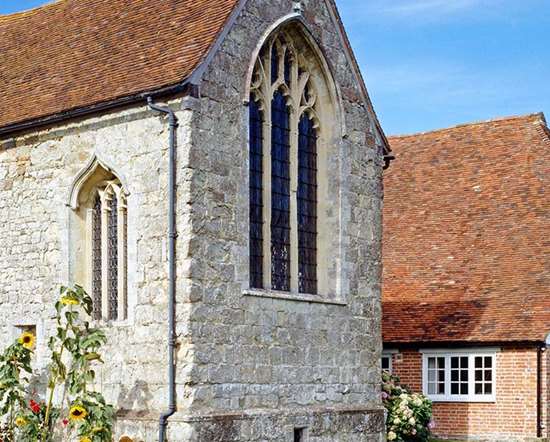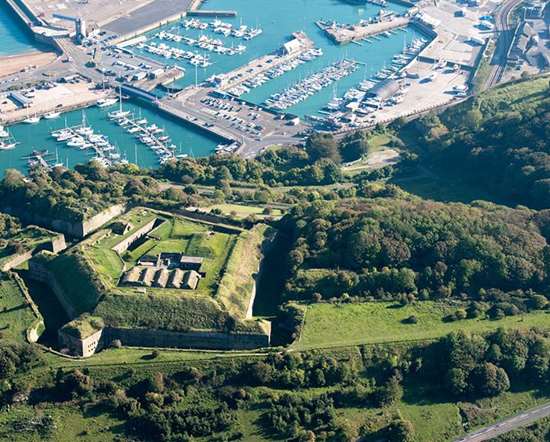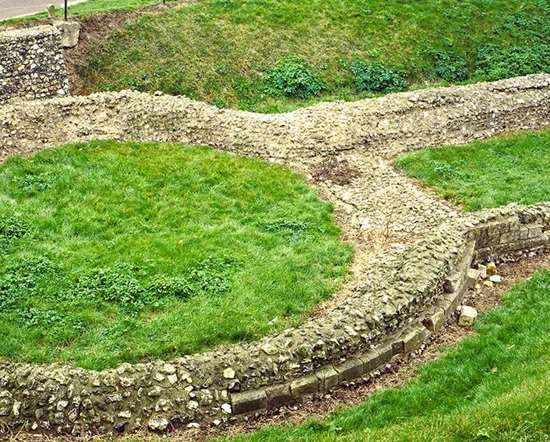English Heritage sites near Stanford Parish

DYMCHURCH MARTELLO TOWER
5 miles from Stanford Parish
This is one of a chain of ingeniously designed artillery towers built around the south and east coasts of England from 1805 to protect against the threat of invasion by Napoleon.

ST JOHN'S COMMANDERY
8 miles from Stanford Parish
The flint-walled 13th-century chapel and hall of a 'Commandery' of Knights Hospitallers, later converted into a farmhouse.

HORNE'S PLACE CHAPEL
11 miles from Stanford Parish
A rare survival of a fine domestic chapel, built for William Horne in 1366 and attached to his timber-framed manor house, which was attacked during the Peasants' Revolt of 1381.

WESTERN HEIGHTS, DOVER
12 miles from Stanford Parish
A huge fortification begun during the Napoleonic Wars and completed in the 1860s, designed to protect Dover from French invasion. Only the moat can be visited.

KNIGHTS TEMPLAR CHURCH, DOVER
12 miles from Stanford Parish
The foundations of a small medieval church, traditionally said to have been the site of King John's submission to the Papal Legate in 1213.

DOVER CASTLE
13 miles from Stanford Parish
High atop the iconic White Cliffs of Dover sits the most iconic of all English fortresses. From the mighty medieval keep to the labyrinth of secret wartime tunnels below, a family day out at Dover towers above all others.
Churches in Stanford Parish
All Saints Stanford

Church Field
Stanford
Ashford
07985025381
http://www.elhamvalleygroupofchurches.co.uk
All Saints Church, Stanford TR 1310 3810
CANTERBURY DIOCESE: HISTORICAL AND ARCHAEOLOGICAL SURVEY
LOCATION: Situated on a low Folkestone beds hillock with the Old Rectory and higher ground to the east, it is at c. 260ft. above O.D. with the East Stour just below to the west and beyond it, Stone Street.
DESCRIPTION: The church was completely rebuilt in 1841 (chancel) and 1878 (nave), but Hasted VIII (1799), 77 describes the earlier church as 'a small mean building, and consists of one isle and one chancel, having a low pointed turret at the west end, in which are two bells. There are no memorials in it.'
Petrie's early 19th century view from the S.E. shows a simple rectangular nave and chancel with a 2-light east window with quatrefoil above (c. 1300): also a ? Perp. square-headed window on the S.W side of the chancel. The S.E. window of the nave (2 light) appears to be post-medieval and there is a dormer in the roof above. There is a south porch, and a west bell-turret with a shallow pyramid roof.
The font from St Mary's, Westenhanger was apparently brought here after the Reformation, when the latter church became disused (see T. Shipden Frampton, 'St Mary's, Westenhanger' in Arch. Cant. 31 (1915), 82-91 with list of Rectors and Patrons).
The 19th century church is in a uniform style with "13th cent." windows, etc. It has a nave, chancel and large N. vestry made with blocks of strongly glauconitic Lower Greensand surrounded by heavy cement pointing. Windows, etc. in Bathstone. It then became a separate Rectory (in the 1870's).
BUILDING MATERIALS: See above for 19th century building materials.
CHURCHYARD AND ENVIRONS:
Shape: All around the church with modern extension on lower terrace to S.W.
Condition: Good
Boundary walls: 19th cent.
Building in churchyard or on boundary: Old school to S.E. + Rectory to E.
HISTORICAL RECORD (where known):
Earliest ref. to church: In Domesday Monachorium it pertains to Lyminge.
Late med. status: Chapel to Lyminge, and attached to the rectory of Lyminge, as was Paddlesworth.
Patron: Rector of Lyminge, and ultimately the Archbishop until the Reformation.
SURVIVAL OF ARCHAEOLOGICAL DEPOSITS:
Outside present church: disturbed by 19th cent. foundations, but remains of earlier church below.
Quinquennial inspection (date\architect): June 2018
ARCHAEOLOGICAL AND HISTORICAL ASSESSMENT:
The church and churchyard: The site of the earlier (medieval) church presumably lies beneath the 19th century one.
Pubs in Stanford Parish
Drum Inn

Stone Street, Stanford North, TN25 6DN
(01303) 812125
thedruminn.com
